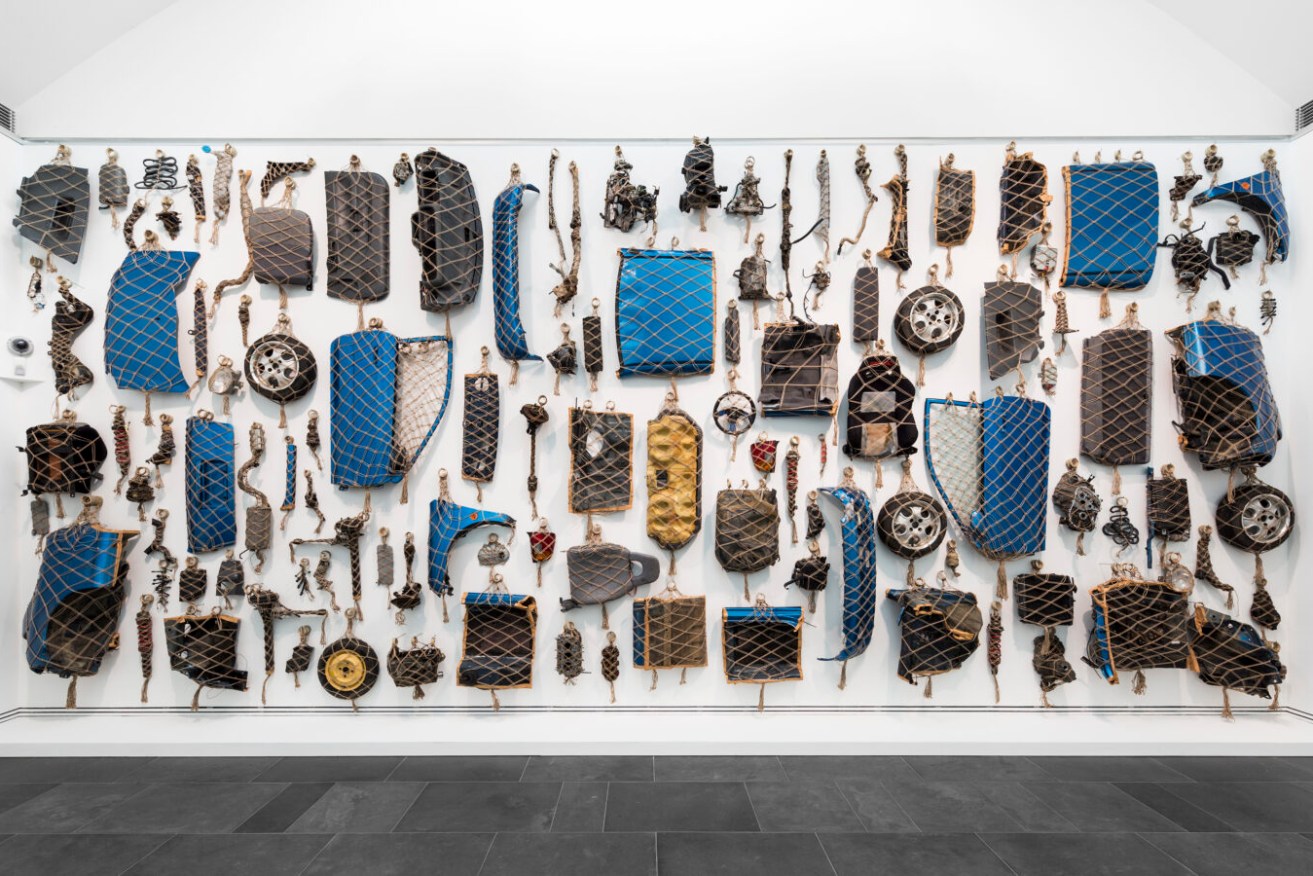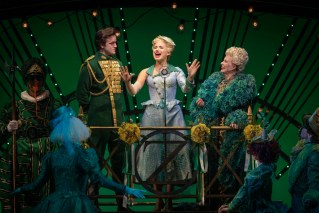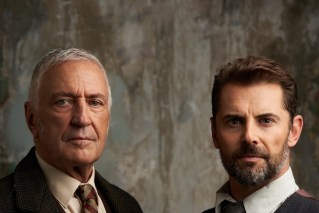What a gas! Mad Max on nitro in Rocky tribute show
Rockhampton Museum of Art director Jonathan McBurnie is grabbing everyone’s attention with an exhibition that is a tribute to the Mad Max film franchise

We Hunt Mammoth (2018) by Claire Healy and Sean Cordeiro is a dismantled vehicle, individual parts netted for assembly across an entire wall of the Rockhampton Museum of Art as a tribute to the Mad Max movies.
Louise Martin-Chew
You’ve seen the movie … but now comes Mad Max the exhibition.
Cars, trucks, spectacularly smashing vehicles and dusty landscapes are integral to the post-apocalyptic vision of George Miller’s Mad Max, released in 1979, with sequels in 1981, 1985, 2015 and 2024.
And now Rockhampton Museum of Art’s director Jonathan McBurnie has distilled the anarchic spirit of the film, expressed by contemporary artists, in Maximum Madness: Art Inspired by Mad Max. McBurnie shares an audience with the RockyNats car event, which occupies the streets outside over the Easter weekend.
A replica Mad Max pursuit black V8 Interceptor Ford Falcon from 2009, by artist Rod Coverdale, sits in the front atrium window of the museum, linking the exhibition to the streets of Rockhampton.
McBurnie tells me that since it was installed, the cleaners of the museum’s front windows are working double time, as noses and hands are pressed against the glass. Crowds gather to see the car. There’s no need for signage to reinforce the “don’t touch” message as this object is treated with reverence verging on the sacred.
As the RockyNats event unfolds with its StreetDrags, BurnOuts and street parade over Easter, crowds are expected to intensify.
Cars are central to an exhibition that’s mainly new work by artists inspired by the Mad Max films. The Mad Max juggernaut is a largely visual experience. In the films, dialogue is sparse. We understand the story of Max and his associates through unfolding explosive imagery and an end-of-the-world aesthetic, dominated by open roads, dusty desert landscapes and leather-clad protagonists.
In Maximum Madness the Mad Max stimulus is conveyed within a broader and contemporary context. We Hunt Mammoth (2018) by Claire Healy and Sean Cordeiro is a dismantled vehicle, individual parts netted for assembly across an entire wall. It encapsulates the car culture enshrined in the Japanese dekotora tradition (decoration trucks), which is also tied into the Mad Max: Fury Road (2015) Doof Wagon. With the contemporary push to phase out fossil fuels, cars face their own existential abyss, and the restraint imposed on these parts renders them both decorative and poignant.
In the same gallery is a skeletal motorcycle, with frame, wheel spokes and handlebar motifs all drawn from cow bones. Chains, leather, scrap metal and rubber complete the ensemble, which local central Queensland artist Brendon Tohill designed for a “post-apocalyptic world where materials would be scarce, using whatever you have on hand … so as not to perish”.
Karen Stephens, who lives in remote Central Queensland, draws on Beyond Thunderdome’s desert settings and her wanderings in such “places of no return”. Her watercolour drawings of rocks, Far From Stable (Concretion: 01-120) (2021-24), use a traditional and subtle medium to engage us with ancient geological formations. The drawings are immersive in number and morph in the imagination, speaking to her family connections but also to the madness that time spent in the desert might induce.
One critique of the Mad Max franchise has been its reduction of Indigenous Australians within an industrialised landscape. Brian Robinson’s (an artist of the Kala Lagaw Ya and Wuthathi language groups of the Torres Strait) response is a mashing of the graphic elements of hot wheels cars and large armoured vehicles with biblical and ancestral narratives, evoking the catastrophic collision of ecological and industrial forces. Robert Fielding’s Graveyards in Between (2016) uses overpainted photographs to reclaim car wrecks within a timeless landscape, absorbing the intrusion of modernity with a strong sense of its ephemeral nature.
With Maximum Madness, McBurnie continues to roll out a lively programming vision for Rockhampton. The Mad Max exhibition becomes “an existential journey through the Badlands”, yet the humour and theatricality of the films, with the punk-leather-anarchic aesthetic, also shines through in the strength of these artistic responses.
Maximum Madness: Art Inspired by Mad Max continues at Rockhampton Museum of Art until June 30.
rmoa.com.au
This article is republished from InReview under a Creative Commons licence. Read the original article.
InReview is an open access, non-profit arts and culture journalism project. Readers can support our work with a donation. Subscribe to InReview’s free weekly newsletter here.![]()













